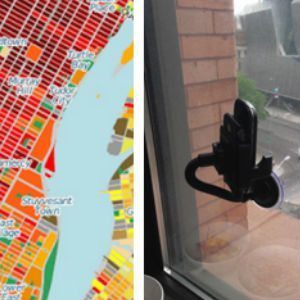
IoT Smartphone Reuse
Repurposing Smartphones for Internet of Things Applications
The personal drone is basically the peace dividend of the smartphone wars, which is to say that the components in a smartphone — the sensors, the GPS, the camera, the ARM core processors, the wireless, the memory, the battery — all that stuff, which is being driven by the incredible economies of scale and innovation machines at Apple, Google, and others, is available for a few dollars.
Wired editor Chris Anderson, quoted in Foreign Policy
Chris Anderson’s famous epiphany is hardly limited to drones. Almost every product that joins the Internet of Things today owes a debt to this trend, which has made cheap single-board computers like the Raspberry Pi and Arduino available to the masses and spurred an incredible wave of innovation.
And while high-end smartphones still command premium prices in western countries, the rest of the world is enjoying the trickle-down benefits as manufacturers in Asia and elsewhere are now producing vast quantities of low-spec but fully capable smartphones at prices the developing world can afford. And Ericsson’s latest forecast report shows the effect this could have, predicting that of 3.5 billion additional smartphones in use by 2020, 80 percent will be owned by users in Asia, the Middle East and Africa.
There’s a trickle-up effect at work here, too: Between the vast numbers of discarded handsets and the minimal cost of new phones from manufacturers around the world, some designers are starting to ask whether the Internet of Things actually needs its own set of specialized hardware. Why build a sensor from scratch or pay well over $100 for a single-board computer and various add-ons, when you can get the same collection of components pre-assembled as a cheap smartphone for as little as $30?
Here are a few projects that are taking advantage of this trend, turning smartphones (or their silicon guts, at least) into the hardware that can power all sorts of IoT use-cases.
11/01/2019
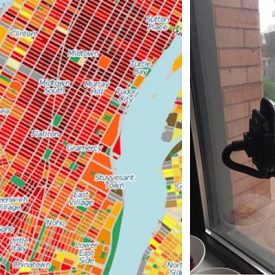
Placemeter
New York City startup Placemeter was one of the first to see the value in out-of-date smartphone hardware. The company’s cloud-based analytics platform uses machine vision algorithms to track the number of pedestrians on a street or customers in a store. While any webcam feed will do, old iOS or Android smartphones can also collect data — users install the Placemeter app and place the phone in a window. As the company builds out its platform and refines its algorithms, it has offered to pay up to $50 a month for video feeds of busy intersections and other public spaces.
Placemeter raised $6 million in Series A funding in September 2014 and is preparing to launch a full beta version of its platform. Check out the company’s blog to learn about its pilot projects around NYC.

Zensors
Zensors is a proof-of-concept project from computer science grad students and professors at Carnegie Mellon University. It repurposes unused smartphones as camera-equipped visual sensors, and uses a combination of crowdsourcing and machine learning to answer natural-language questions about what the camera sees.
Users place the phone to point its camera at something they want to track, then use a figertip to circle an “area of interest” in the video feed and type in a question that they’d like to have answered — such as “How many cars are in the parking lot?” or “Is it snowing?” or “How large is the pile of dishes on the kitchen counter?” Images are reviewed first by humans through Amazon’s Mechanical Turk platform, which provides some training so that a machine learning algorithm can eventually take over.
Zensors was presented at the CHI ‘15 conference on human-computer interaction in Seoul. To learn more, read through the full research paper.
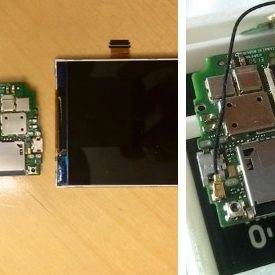
JanOS
JanOS is an operating system developed specifically to control the mainboard of a mobile phone as though it’s an IoT device. Named for Jan Jongboom, who has driven the bulk of the project at Norwegian telecom subsidiary Telenor Digital, JanOS is built on the same foundation as Firefox OS. Essentially, it’s a replacement for the Firefox OS user interface that assumes the phone no longer has its own display; that means developers can still interact with the hardware using Firefox OS APIs, as well as some new ones introduced by JanOS.
JanOS can run on any rooted device that is capable of running Firefox OS, which includes those designed specifically for Firefox OS as well as Android devices for which Firefox OS has been ported. As more ports show up, more phones will be compatible as scrap parts for building JanOS devices. Jongboom has also posted the source code on GitHub, so other developers may be able to help improve the project and more quickly extend it to other phones’ chipsets.
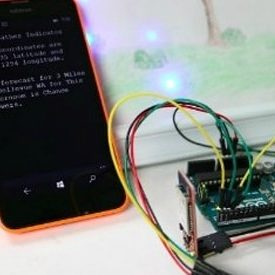
Windows Arduino Libraries
At the 2015 Build developer conference, Microsoft announced two new software libraries that essentially allow Windows phones (or any hardware running Windows 10) to act as Arduino-compatible development boards.
Windows Virtual Shield for Arduino lets any Windows device to connect wirelessly to an Arduino board. That gives the Arduino access to all of the hardware in the phone, from gyroscope to touchscreen, just as if those components were hard-wired through an Arduino "shield" module. Windows Remote Arduinoruns the equation backwards, allowing a Windows application to control and draw on the components of an Arduino device.
With the release of the libraries, Windows 10 became the first operating system to join the Arduino Certified program by making it easy to add an entire smartphone’s worth of hardware components to any Arduino project.
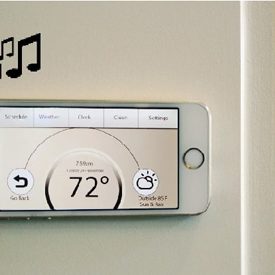
Bemo
"BEMO° transforms android, iphone and iOS devices into a smart thermostat alternative and energy management brain center.
BEMO° is connected to your HVAC wires coming out from the wall. Your android or iOS smartphone is then connected to BEMO° with a USB wire and our universal mounting system. BEMO° uses the power from your 24v HVAC lines to charge your host device. At the same time BEMO° is fitted with 8 switches along with a temperature and humidity sensor so it functions exactly like your typical thermostat."
Dedicated Apps
- Manything
- Salienteye
- Cloud baby monitor (ios)
- Airbeam (ios)
- Navier HUD